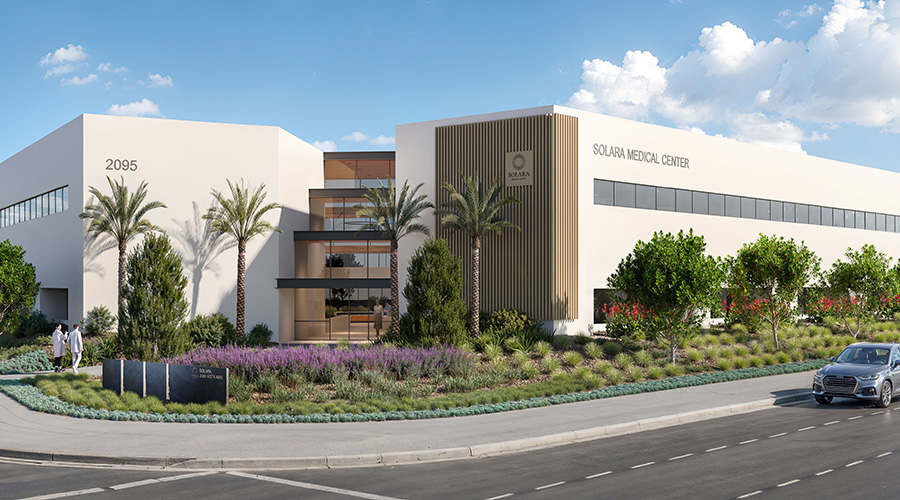Digital technology is transforming the healthcare industry—from electronic medical records to wearables that monitor patients’ vitals—but the basic design of most hospitals hasn’t changed since World War II, according to CBRE Group, Inc. To change that, a growing number of healthcare facilities are partnering with real estate and architecture firms to create built environments that combine patient needs with smart design. The desired result: a better patient experience, which can yield happier and healthier outcomes overall for patients as well as providers.
“Hospitals are operating on finite resources and have to do more with less—meaning more patient care with less reimbursement—so they’re trying to figure out how they can get the most bang out of their buck from their facilities,” said Curtis Skolnick, managing director, Capital Program Solutions, CBRE Healthcare.
Many contemporary healthcare spaces are created using an architectural, research-based model known as design thinking or evidence-based design—a problem-solving approach that strives to improve consumer healthcare experience and delivery.
“If we can show through the design environment that there are improved patient outcomes, fewer hospital-acquired infections, shorter lengths of stay, improved health status, that’s what we are trying to achieve,” Mr. Skolnick added.
According to a recent story in Blueprint, CBRE’s global online magazine, there are three key areas where architecture can have a tangible impact on the patient experience—communication, support for caregivers, and design that enables a more efficient, happier staff.
1. COMMUNICATION VIA DESIGN
The first step to achieving those goals is working closely with architects and planners to determine which portion of the patient population is being served so spaces can be customized accordingly.
“Spaces should communicate calm and warmth, and be welcoming and accessible to patients and caregivers. Parking should be easy and accessible. Extended-care rooms should be filled with daylight and include natural palettes and organic materials and textures with soothing colors,” said Lora Schwartz, principal in CBRE Healthcare’s Capital Program Solutions team.
Similarly, erasing “equipment fear” by removing unnecessary medical equipment—particularly in rooms that are not set up for urgent care—can help lower stress.
2. CAREGIVER SUPPORT
It is important to create a comfortable space for caregivers, complete with all the necessary amenities to ensure they can stay around the clock: a laptop station, WiFi access, a place to comfortably sit and work or read, and a space in the room for sleeping. A well-thought out design should ensure that parking, 24-hour food options and even mailboxes are accessible to caregivers.
3. MAINTAINING A HAPPY, PRODUCTIVE STAFF
“When we talk about patient experience, we want to make sure the staff experience as well is optimal, because if the staff is having a negative experience, it can affect the patient,” added Ms. Schwartz. “Chaos and business and work mentality doesn’t need to be in the space of our visitors, so separate them.”
Hospitals should be designed so that business operations take place out of public view, without “trash carts running across you in the elevators,” she continued.
WHAT’S NEXT?
According to Mr. Skolnick, the outpatient space is the next untapped opportunity in healthcare.
“If we’re going to truly manage the health of our population—eradicating diabetes and other diseases—we need to challenge ourselves as an industry to better design the outpatient space,” Skolnick says.
Blueprint, CBRE’s global online magazine, is dedicated to telling timely and insightful stories on the trends, influences and ideas shaping our world, told through the lens of commercial real estate. Blueprint can be accessed at blueprint.cbre.com.

 Healthcare Real Estate: Responding to Shifting Patient Demands
Healthcare Real Estate: Responding to Shifting Patient Demands Over 40% of Workers Impacted by Seasonal Depression
Over 40% of Workers Impacted by Seasonal Depression Archer Property Partners Acquires Medical Office Building Near Tri-City Hospital
Archer Property Partners Acquires Medical Office Building Near Tri-City Hospital The OR HVAC Puzzle: Why Individual Systems Are on the Rise
The OR HVAC Puzzle: Why Individual Systems Are on the Rise Sutter Health Announces Plans for New Santa Clara Medical Center
Sutter Health Announces Plans for New Santa Clara Medical Center